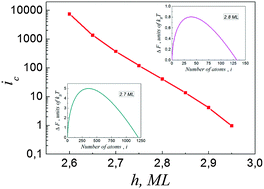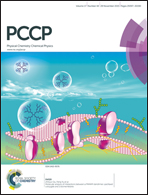Generalized Muller–Kern formula for equilibrium thickness of a wetting layer with respect to the dependence of the surface energy of island facets on the thickness of the 2D layer
Abstract
Experimental results indicate a particular importance of such a value as the equilibrium thickness of the wetting layer during epitaxial growth according to the Stranski–Krastanow mechanism in systems with a lattice mismatch. In this paper the change in free energy during the transition of atoms from the wetting layer to the island in such systems is considered. Recent experimental results also show that the surface energy of the island's facets depends upon the thickness of the deposited material. So, in this paper the equilibrium thickness of the wetting layer, at which transition from 2D to 3D growth becomes energetically favorable, is calculated with the assumption that the specific energy of the island's facets depends upon the wetting layer thickness. In this approximation a new generalized Muller–Kern formula is obtained. As an illustration of the proposed method, an example of a numerical calculation according to the new formula for the material system of germanium on a silicon (001) surface is given. The result for the found equilibrium thickness of the wetting layer is rather unexpected since it differs from the value obtained in the bounds of the traditional Muller–Kern model.


 Please wait while we load your content...
Please wait while we load your content...